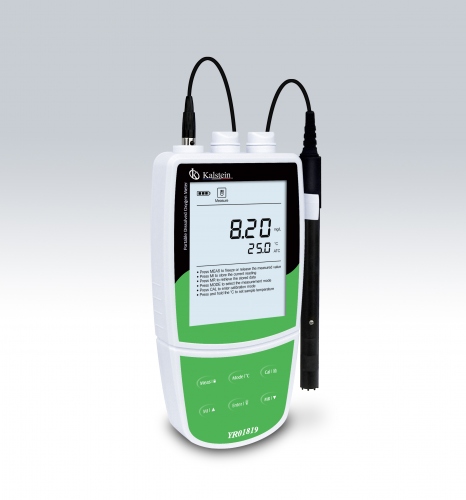Today’s ion meters are based on the ion-selective electrode technique. These are measuring instruments that have a sensitive membrane capable of measuring ionic activities. That is, they measure the concentration of a given ion in a solution using both a sensing electrode and a reference electrode.
The methodology used by ion meters with selective ion electrodes is ion exchange, which measures the potential difference produced by the contact of the electrode with the ion being analyzed.
To carry out the ion measurement, the ion selective electrodes must come into contact with a certain ion present in the solution. Since the main concern of this measurement is the concentration, and not the activity of the ions in the solution, many times salts are used that increase the ionic strength to facilitate the relationship between the potential of the electrode and the concentration. The activity of the specific ion is converted to electric potential when it comes into contact with the active membrane of the ion-selective electrode. Once this conversion is carried out, the electrical potential can be measured with a voltmeter or with a pH meter.
Importantly, the ion concentration measurement process is carried out using both a sensing and a reference electrode. It is the sensing electrode that is responsible for the selectivity of a specific ion. Once both electrodes are immersed in the aqueous solution and the specific ion activity is converted to electrical potential, the reference electrode is used to determine the potential difference.
Types of ion selective electrodes
There are four types of ion selective electrodes: glass membrane electrodes, solid state electrodes, solid or liquid matrix electrodes, and gas sensing electrodes.
What is a conductivity meter?
A conductivity meter is a device that measures the specific electrical conductivity σ [S / m], which is a physical parameter that describes the ability of a substance (liquids, metals, gases) to conduct electrical current. In liquids, electrical conductivity is caused by positive and negative charged ions that are capable of interacting with an applied electric field. In general, conductivity depends on the concentration and type of ions, and on temperature. There are two technical approaches to measuring conductivity: inductive and contact.
- Inductive conductivity: Inductive sensors use two electromagnetic coils that are usually encapsulated in a polymer ring. An alternating voltage is applied to the drive coil, which induces a voltage in the receiving coil. The induced current is influenced by the conductance of the solution. Due to the closed housing, inductive sensors can be used in aggressive environments, but are not suitable for conductivities below 15 µS / cm.
- Contact conductivity: Contact sensors consist of conductive electrodes (for example, metals such as platinum, gold, steel, titanium, and non-metallic graphite) that are in direct contact with the medium. The primary parameters measured are voltage and applied current. The interdependence of both parameters, described by Ohm’s law, allows the calculation of a resistance R (measured in Ohm [Ω]) or the inverse – the conductance G (measured in Siemens [S]).
At Kalstein we are MANUFACTURERS and we have a wide range of ion and conductivity meters, at the best PRICES on the market and made with the highest quality standards. That is why we invite you to take a look at: HERE

